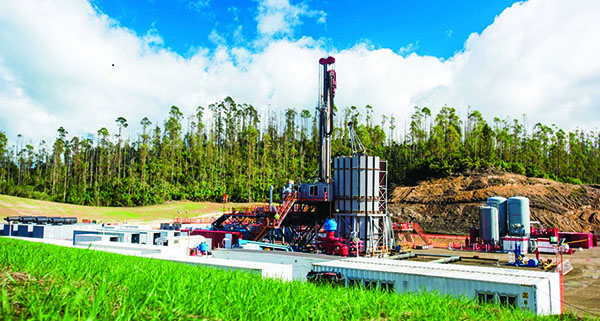New Zealand's Largest Geothermal Plant Comes Online
New Zealand’s largest geothermal plant was synchronized to the country’s national grid in October. The project took just more than three years to complete.
Eastland Group, a Gisborne, New Zealand-based company that owns Eastland Generation, which will operate the Te Ahi O Maui plant, said the project was finished with no time lost to injury though more than 265,000 work hours were involved.
The plant was initially conceived as a 22-MW facility, though Eastland now says it should be able to produce 25 MW of power. Te Ahi O Maui is a partnership between Eastland Generation and the Kawerau A8D Ahu Whenua Trust; the trust first sought permission to build the geothermal plant (Figure 1) on land it owns in the Kawerau geothermal field in the Bay of Plenty on the North Island of New Zealand.
“Both partners have brought strong commitments to the cultural wellbeing and safety of the whenua and the people working on the project,” Ben Gibson, Eastland Generation general manager and Te Ahi O Maui project director, said in a news release. “Whenua” is a Maori word meaning “people of the land.” The Maori are the indigenous Polynesian people of New Zealand. Gibson added, “Our kaupapa of development has ensured the project was executed in an environmentally friendly, sustainable and culturally appropriate way.” “Kaupapa” is a Maori word meaning “a set of values, principles, and plans.”
Initial heating of the plant began in the last week of September. Testing and a reliability run were conducted by Ormat Technologies, a Reno, Nevada-based company that has designed and supplied geothermal projects in New Zealand since 1986. Matt Todd, CEO of Eastland Group, said in late September, “The construction component was delivered ahead of plan, and we’re beginning commissioning only a few weeks behind our initial ambitious schedule.”
The Te Ahi O Maui plant includes three geothermal production wells, two geothermal injection wells, an Ormat binary power station similar to others the company already operates in New Zealand and elsewhere, and a transmission connection to the national grid. The steamfield was designed and built by MB Century, a New Zealand construction company that serves the energy industry. Horizon Contracting, part of the Bay of Plenty’s Horizon Energy Group, built the transmission line. The plant has permits to extract 15,000 metric tons of geothermal fluid daily from the Kawerau geothermal reservoir, for a period of 35 years. Eastland said almost all the fluid will be injected back into the reservoir to ensure sustainable operation. Said Todd: “One of our aims was to build a geothermal plant from the ground up, managing multiple contractors and high risk hazards, respecting and working closely with local iwi (people), with zero harm to workers and visitors. We’re proud to have achieved this, and it’s a testament to all the teams involved.”
The Te Ahi O Maui plant is the first geothermal power station built in New Zealand under new health and safety legislation enacted in 2016. Gavin Murphy, chief executive of the Eastland Community Trust (ECT), said the plant is important to the regional economy of TairÄ whiti Gisborne and Kawerua. “It has been exciting to see the plans for Te Ahi O Maui come to life. The project is an example of best practice development with mana whenua, health and safety, and renewable energy. Te Ahi O Maui is also notable as the largest single investment made within ECT’s portfolio.”
—Darrell Proctor is a POWER associate editor.
